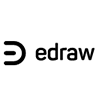ARM architecture is one of the most advanced and energy-efficient computing systems, widely used in everyday applications. Renowned for delivering high performance while consuming minimal power, ARM chips power a vast range of modern devices, from smartphones and tablets to embedded systems and IoT applications.
In this guide, we'll explore:
- What is the ARM architecture, and what are its key components?
- The wide range of applications utilizes ARM chips.
- Methods for designing ARM diagrams.
By the end, you'll have a clear understanding of how ARM architecture powers today's most efficient devices.
In this article
ARM Architecture Diagram
ARM architecture diagrams simplify the main components and systems working in it. Here is the AR architecture diagram for you to simplify the model of the whole system.
The Components of ARM Architecture
There are a lot of devices currently being used in ARM architecture, including cameras, networking devices, and computer chips. The ARM architecture uses less energy compared to other microcontrollers available.
ARM architecture is divided into three profiles, i.e., A, R, and M. The A profile is for the applications, whereas the R and M profiles are for real-time networking and Microcontrollers, respectively.
Here are a few of the components of the ARM architecture.
The Instructions Set
The instructions set provides the instructions to the memory disk in the architecture through coded information. Processors available in the architecture manage this information given by the instruction set to execute by using much less energy.
Priority Encoders
The duty of the priority encoders in the ARM architecture is to save the information in the register files. These encoders help the architecture to load the needed files immediately. These encoders are built to automatically recognize the instructions given in the system.
32-bit Inputs
Register files are used to receive the instructions from the 32-bit inputs through the Arithmetic and logic units. Then, there are output flags named the S flag, the C flag, the V flag, and the Z flag. Here, the S-bit output goes to the S flag, and the C-bit output goes to the C flag, and so on.
Booth Multiplier
32-bit input information is processed through the Booth multiplier, and the output is also processed through it in 32 bits. The register library is also attached to this component, making it easy to read most of the input files.
Control Unit
The control unit is the brain of the system and manages most of the functions, including time, input, and output signals. It is made of complex circuits of functions encoded to help the architecture work in symmetry. It is connected to most of the key components of the architecture.
The Exception Model
The exception model of the architecture is equally important as the control unit. It reads the different levels of the inputs provided to the control unit. It reads the trace points, breakpoints, and different types of exceptions in the systems.
Applications of ARM Architecture
There are a lot of applications that use the ARM architecture. A few of them are mentioned below.
Home Electronic Devices
Many electronic devices used at home have ARM architecture in them, including smart TVs, Gaming consoles, Routers, and Printers.
IoT (Internet of Things)
ARM architecture is used in home sensors, remotes, and robotics, where low energy with full proficiency is required. These are also used to power smart speakers, lights, and automatic machines used in homes.
Computers and Laptops
The ARM architecture chips are found in computers and mobile phone devices due to their performance and low energy consumption. The bigger companies like Amazon and Fujitsu are using ARM architecture microcontrollers for energy-efficient computing.
Automobiles
The infotainment systems, touch screens, lane assist, ADAS, ECUs, lane detection and assists, and collision avoidance all use ARM architecture.
Medical Industry
AM architecture is being used in most of the latest medical equipment, including ECG monitors, diagnostic devices, glucose checkers, and the latest health monitor devices like smartwatches.
Airplanes and Military Equipment
ARM chips are being used in the latest fighter planes to monitor paths and flights. The tanks use these chips in the targeting system to aim at the specific target.
How to Draw ARM Architecture Diagram
Choosing the right tool for creating diagrams can make the process both easier and more effective. EdrawMax stands out as one of the best options, offering powerful features for designing block diagrams, family trees, flowcharts, bar charts, and much more.
Here are a few of the key features of this tool.
- User-Friendly Interface: EdrawMax has a smooth yet innovative interface that helps guide you throughout the design process.
- Large Library of Tools: EdrawMax offers a large library of elements, tools, color schemes, themes, and guidelines that can help you draw anything effectively.
- Templates Library: EdrawMax offers templates to save your time. You can use these templates to change and make your own designs with little editing.
- Multiple Export options: EdrawMax offers multiple Export format options from which to choose. It offers PDF, SVG, Visio Files, JPG, PNG, and many more options to export your designs.
Here are the two methods that you can use to draw your ARM Architecture Diagram with the help of EdrawMax.
Method 1: Start from Scratch
EdrawMax offers a bunch of functions like themes, color schemes, elements, and connectors that are needed to make a good diagram. So, starting from scratch is no longer a tedious task. All you need to do is follow the steps below to start your diagram from scratch.
Step1 Open the tool and click New
- Open EdrawMax and click New and then Blank Drawing to open the empty canvas.
- This is where you need to do the designing.

Step2 Add Elements to the Canvas
- Start dragging the needed elements on the canvas.
- Find them using some keywords in the search bar of the elements library if you don't see any on the screen.
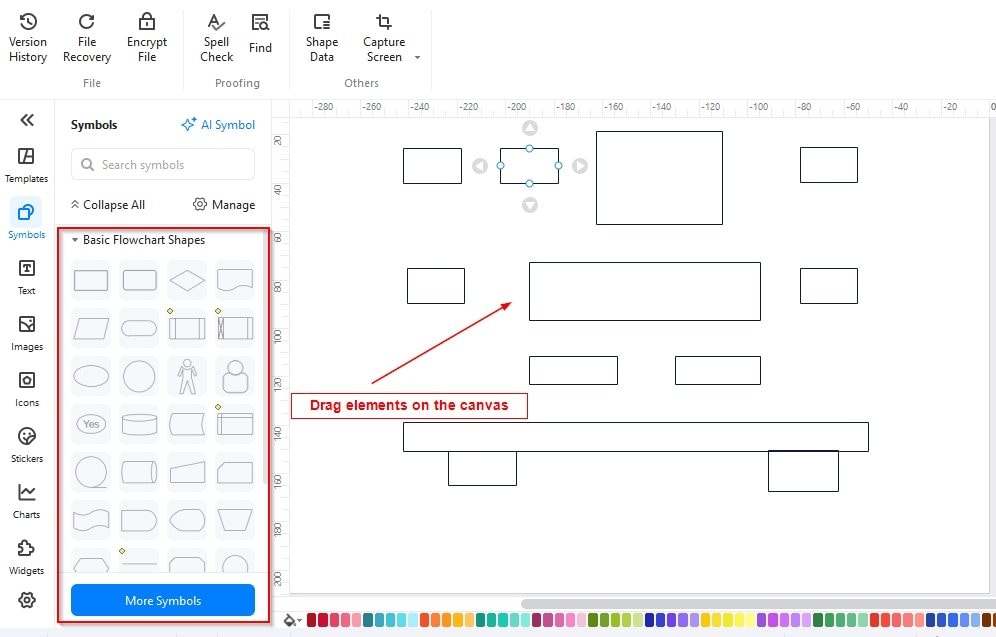
Step3 Arrange them and Add Texts for each Element added
- Start arranging the elements in the order you like them to be and add text for each Element.
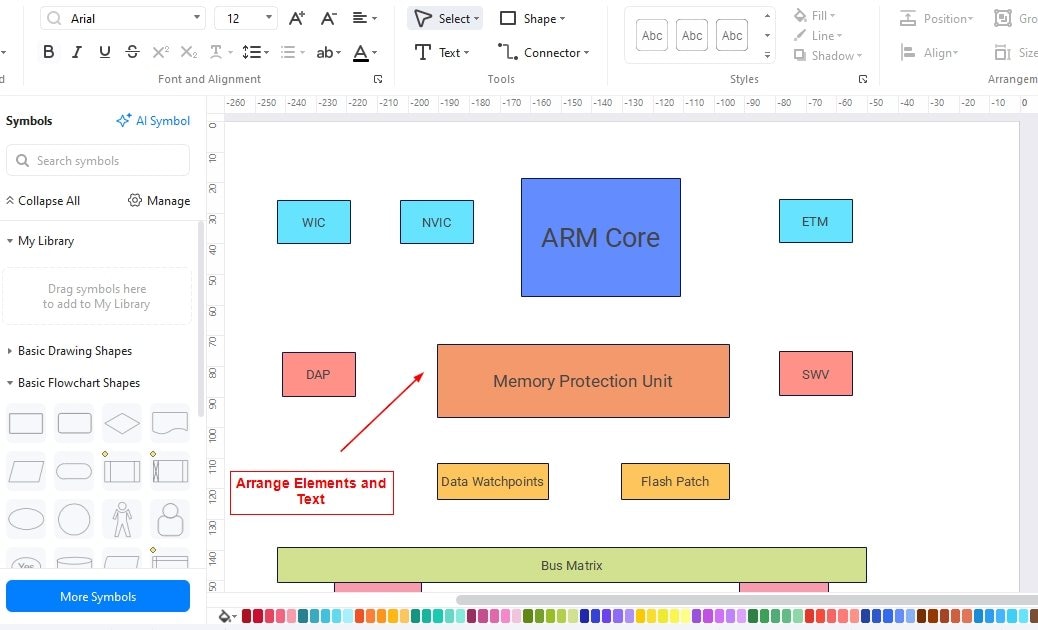
Step4 Add Relationships
- Use the connector tool to add relationships in the diagram.
- In our design, you need to add arrows, which you can find in the library as well.
- Drag them on the screen and adjust according to your needs.

Step5 Export your Diagram
- Once all the editing is done, you need to export your design for further use.
- Click the Export button available at the top of the screen, choose the right format, and click Export.

That's how easy it is going to be to design a smooth diagram on EdrawMax even when you start from scratch. Don't forget to save the source file so that you can get prints in different formats if needed in the future as well.
Method 2: Start with a Template
When you start with a template, you can complete a diagram within minutes. The huge templates library helps you find the relevant designs on EdrawMax. Let's start with a template this time.
Step1 Find your Relevant Template
- Open EdrawMax and click templates on the left side of the screen.
- Enter something like a block diagram in the search bar to see the different diagrams that are available.

Step2 Click the Template You like
- Click the one template you feel is the closest to your design.
- Bring this to your EdrawMax canvas to do some editing.

Step3 Edit your Template
- Use the toolbar to add or remove different shapes in the design to make your own design.
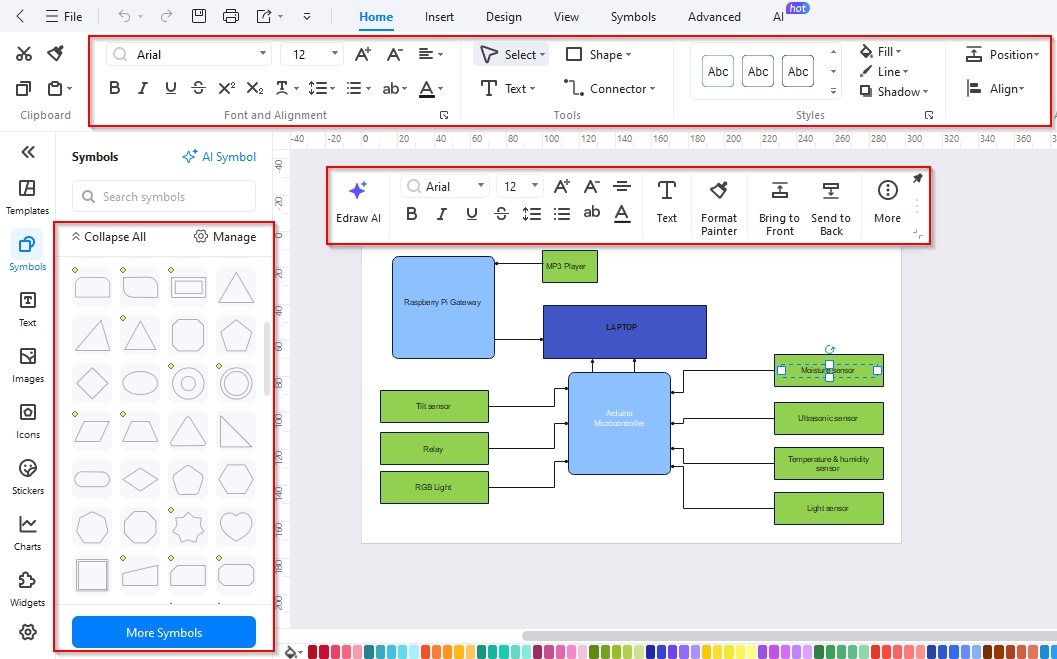
Step4 Save your Design
- Once all the editing is done, it's time to export your file in your desired format.
- You can save the source file as well if you need to make further changes to your diagram.
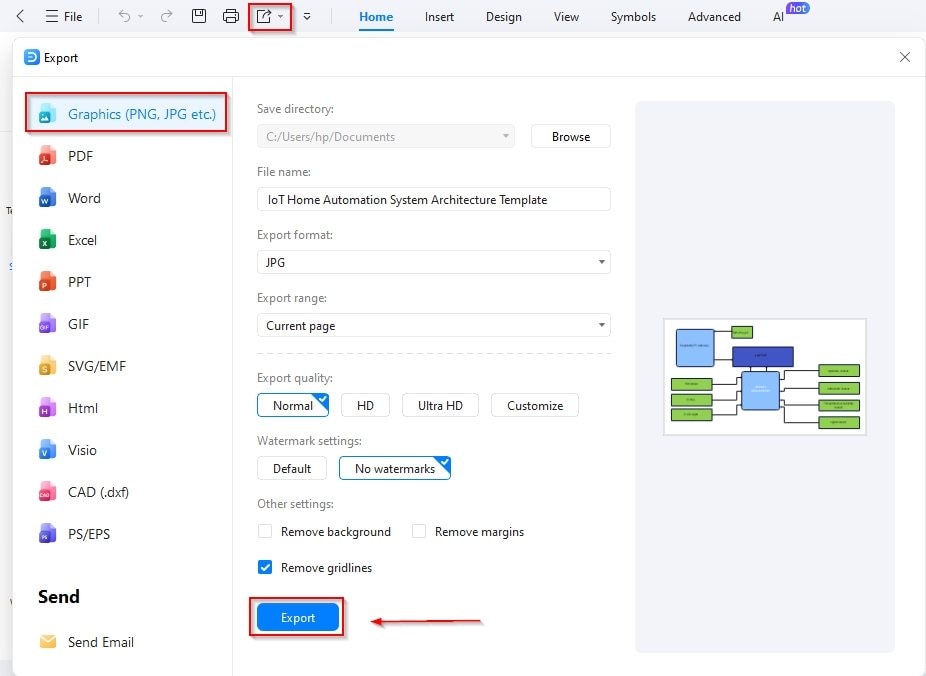
Final Words
The ARM architecture diagram provides a clear understanding of the fundamental principles and components of this microcontroller, along with some of its key applications. Visualizing the design through such diagrams makes complex concepts easier to grasp.
With EdrawMax, you can create precise and professional diagrams that simplify learning and communication. Designing with EdrawMax not only enhances clarity but also helps your audience better understand intricate systems.
